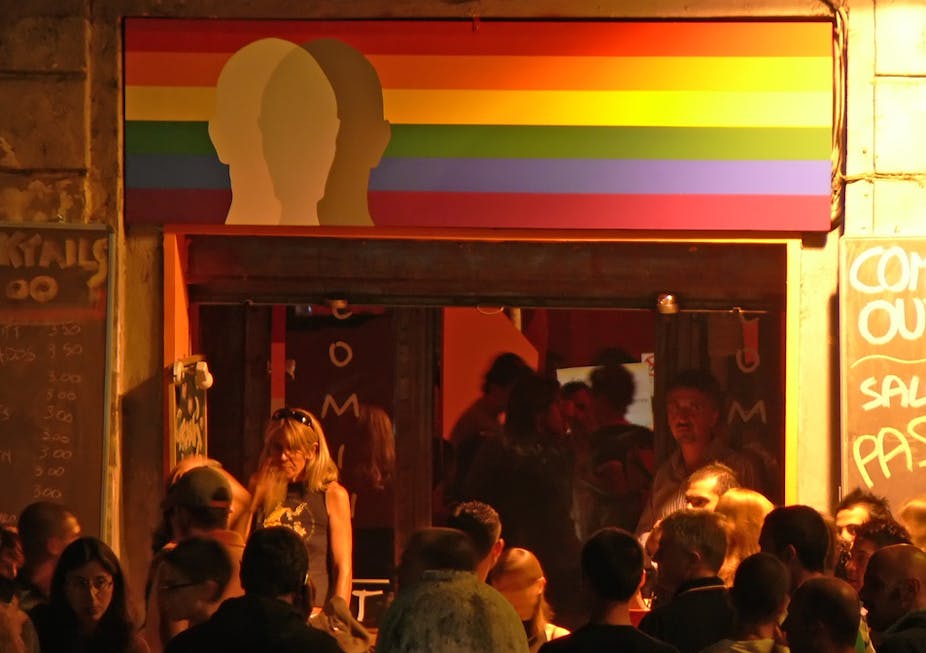We’ve got HIV and AIDS under control, right? It is a reassuring narrative that offers a feeling of progression from the dark days of the 1980s when it felt out of control. But HIV infection globally continues to be a major public health burden. Since the beginning of the epidemic, the World Health Organization (WHO) estimated in 2013 that almost 78m people have been infected with the HIV virus and that 39m people have died as a result. In 2014, estimates from UNAIDS suggested that there were 37m people globally living with HIV.
Despite positivity in some press reports, there is still no cure or vaccine for HIV. The best we can manage right now is to keep the disease under control through anti-retroviral therapies, especially if diagnosed early. In the UK, HIV represents one of the most serious health conditions; there are an estimated 107,800 people living with HIV, one quarter of whom are estimated to be unaware of their infection.
Trouble spots
Headline figures, however, tend to mask significant inequalities in terms of those most at risk of infection. The main routes of transmission vary from country to country, but infection rates remain stubbornly and disproportionately higher in some key populations such as men who have sex with men, migrant populations, injecting drug users and sex workers.
Globally, men who have sex with men, or MSM as the group has become known to health researchers, have become a particular focus of prevention strategies and programmes. In the UK, the most recent data from 2014 demonstrates that of the new HIV diagnoses, 54% (3,360 out of 6,151) were among the MSM group.

My colleagues and I, as well as many others have argued that stigma and discrimination can cause these men to fear accessing health services including testing, treatment, prevention, counselling and support. Consequently, some of the most at risk of HIV can be the very same who are also the most “hidden” and difficult to reach through mainstream sexual health services.
Adjusting the settings
So how can we address that problem? One way to reach those who either don’t want to or don’t feel able to use sexual health clinics is to go ahead and deliver services where those who need them are. In other words, creating opportunities for healthier “settings”, or more supportive environments for health. A bar, club, or sauna can be developed into a healthy place to reach particular target populations.
Such an approach to health promotion has its roots in the WHO’s Health-for-All strategy and the WHO’s Ottawa Charter for Health Promotion. It is about delivering health promotion in the places where people live, work, love and play.

Research by the University of Brighton with European partners has shown that this approach can be an important tool. It makes the fight against HIV infection a partnership between gay men themselves, the saunas, clubs and other businesses targeted at them, and the local health authorities. In both the European Everywhere Project and more recently the SIALON II project business owners successfully engaged with HIV prevention and other health promotion interventions. They provided customers with access to condoms and lubricants, HIV/STI information on prevention and treatment, and offered HIV/STI testing.
In some cases, business owners went even further. Important changes were made to workplace policies to support HIV issues. Staff got sexual health training so they were better able to support customers, while staff and clients were assured non-disclosure and non-discrimination through supportive policies and practices.
Stigma
Findings from these and other studies, as well as follow-up evaluation work, has given us three key findings. First, so-called hard-to-reach MSM can be reached effectively in this way, offering a real alternative to clinics. Also, owners of gay businesses throughout Europe (and elsewhere) report that they want to provide health promotion opportunities for their customers. And thirdly, men in the MSM group are interested in accessing HIV prevention and other sexual health interventions through the gay businesses they frequent.
The idea of engaging with private businesses in this way to prevent new HIV infections is not new. NGOs both in the UK and in Europe are doing good work. Yet despite positive research evidence and some excellent practices from around the world the UK is yet to fully embed routine, coordinated, sustainable and intensive HIV prevention via gay businesses. The reasons are complex. There will be concerns over the financial sustainability of initiatives, as well as conflicting economic and public health agendas. There is also a lack of public health and/or NGO capacity to support businesses fully.

However, in my view, the largest obstacle to routine involvement with gay businesses remains social stigma and discrimination – both in terms of the men who have sex with men, as well as HIV/AIDS itself. This is fuelled by misconceptions, fear, silence, lack of awareness and engagement, religious opposition – and in some cases outright prejudice. Tackling this stigma and discrimination is crucial in fighting HIV, not only because it is a matter of social justice but also because it directly contributes to negative sexual health outcomes and helps to widen health and social inequalities.
As we head towards World Aids Day 2015 surely it is time to rethink how we focus efforts to prevent new HIV infections and better support those living with HIV. Extending health promotion efforts to the places where the most vulnerable can be directly targeted is not only sensible, pragmatic and most likely cost-effective in the long-term, but it is also the right thing to do. It requires an open, loud and widespread dialogue around acceptance of diverse sexual identities and sexual practices, as well as the need for the development of diverse sexual health services that are equally accessible to all.

